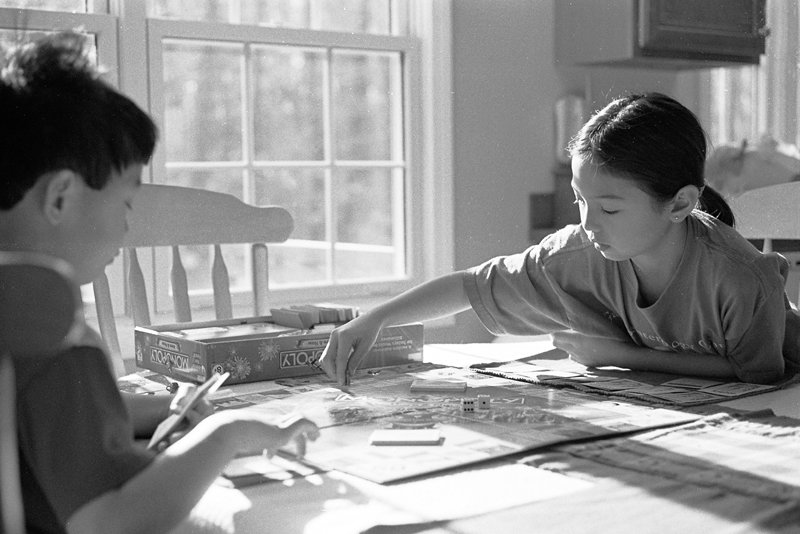R
ray_g
Guest

This is off the roll I processed today. I thought I would share this story:
I took several shots of this same scene with a Nikon DSLR. It was an exposure nightmare. I was bracketing, using the spotmeter, checking histograms on the LCD. In the end, it was a choice between blown-out highlights or blocked up shadows. I tried to save it on Photoshop with masks and layers, but still ended up very frustrated.
The same time the following afternoon, the kids were at it again (yes, I know, they have JUST discovered Monopoly
This is not a criticism of digital. I guess it was a reminder, to me, of why I still love film for black and white. Especially APX and Rodinal.
Last edited by a moderator:
